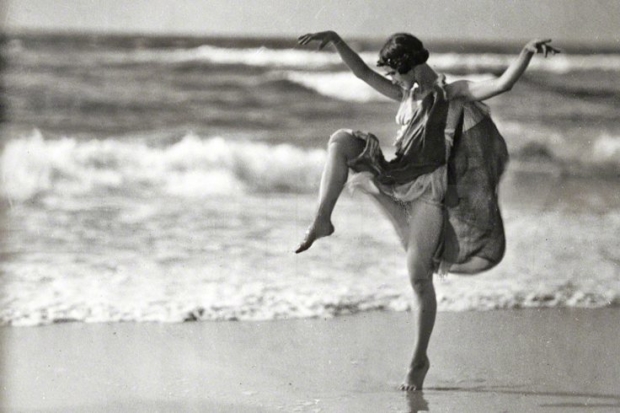
Mother of modern dance and pioneer of feminism
Isadora Duncan was an American dancer (San Francisco, California, May 26, 1877 or May 27, 1878 – September 14 – Nice 1927). She elaborated a personal style based on the full freedom of body expression. A supporter of the gymnastic preparation of the body whose dance would gradually take over, Duncan profoundly influenced the subsequent evolution of the ballet. Defined the founder of modern dance.
The image that Isadora tried to reproduce in her dances was the wave, an elegant fusion of light, sound and dance steps, symbolizing the cyclicity and energy of nature, which continually regenerates itself. Her ideas, in many ways revolutionary and ahead of their time, were influenced by a very personal reworking of Nietzsche’s classics and works. Her performances inspired by the Greek antiquity and the Renaissance period, in which she debuted barefoot, with loose hair and wrapped in peplums and floating veils, soon had great success all over Europe.In an age when classical ballet was predominately dominated by female etoiles, the Duncan of unconventional virtuosities and dances, which seemed to celebrate independence and self-expression, was adored by the female audience.It was the dusk of September 14, 1927 when, on the Promenade des Anglais in Nice, Benoît Falchetto, an Italian-French car driver, offered the passenger seat on his Bugatti to the famous dancer. As she climbed onto the mighty car, before the long scarf wrapping her neck got caught in the wheels of the car strangling her, Isadora took leave of her friends by uttering a fatal phrase, destined to remain sadly famous:
Adieu, mes amis. Je vais à la gloire!
That is “Goodbye, my friends, I’m going to glory!”
Life and activity of Angela Isadora Duncan
The daughter of a Scots and an Irish, she had a very poor childhood. After studying classical dance she freed herself from academic rigor to follow a teaching based on the principles of François Delsarte regarding the harmony of body and movement. She settled in London with her family and in 1900 she went to Paris where she danced in private evenings on classical music. Barefoot, dressed in a simple Greek style tunic, she posed in movements that she had studied observing the bas-reliefs of Hellenic art. With this new type of dance, called “free” or “natural”, D. intended to proclaim freedom of expression from the strict academic rules and artifices of classical ballet. Her dance soon spread throughout Europe where she influenced the same classical ballet and the ongoing evolution of the Russian ballets of S. P. Djagilev. The D. used music not expressly composed for the dance giving the start to the symphonic ballet, then brought forward in the thirties by L. Massine. D. however, found it impossible to teach a real technique because of its dispersive nature and discontinuity in inspiration. She was maried with E. Gordon Craig, then to the Russian poet S. Esenin. Shee died strangled by a scarf entangled in the wheels of his racing car. D. wrote many books, including the autobiography My life.
~ Source Rome Central Magazine
http://www.peacehost.net/DiabloDanceTheater/Dwyer_bio_of_ID.htm
